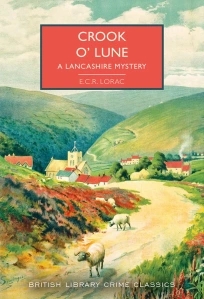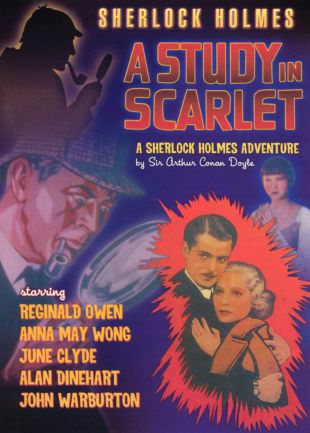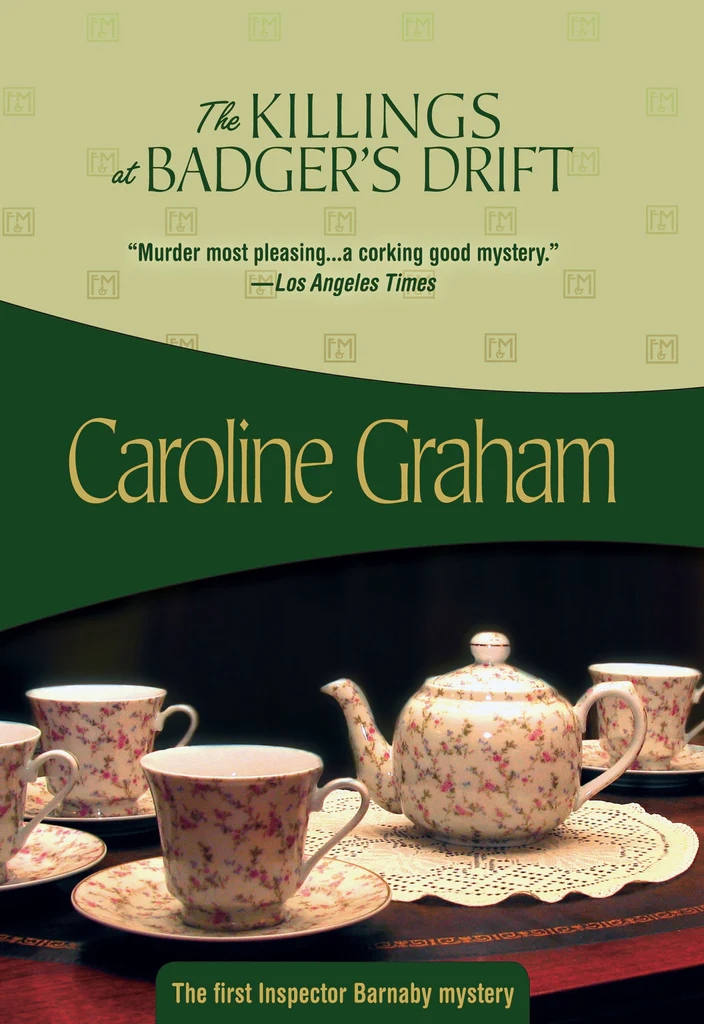
Originally Published 1954/1953
The Detection Club produced several collaborative stories in which members contributed a section making up a part of a bigger mystery story. Perhaps the most famous of these is The Floating Admiral but there were several others including the two efforts contained in this volume.
This book is a very slim volume as each of the stories is only about seventy-five pages long. The list of collaborators is a little less star-studded than the one in The Floating Admiral with the first story featuring few familiar names other than Carr’s. No Flowers by Request boasts a more familiar lineup of some of the leading female crime writers of the decade who likely better known to modern readers.
Crime on the Coast
Authors: John Dickson Carr, Valerie White, Laurence Meynell, Joan Fleming, Michael Cronin, Elizabeth Ferrars
The first story in this double-header originally appeared as a serial in the News Chronicle in 1954. Each of the authors gets two consecutive short chapters, just eleven or twelve pages, to make their contribution to the story each picking up from the conclusion of the previous author.
The first two chapters are the work of John Dickson Carr who sets up an interesting adventure scenario in which a mystery author arrives at a seaside fun fair at the urging of his publisher. A ‘fat man’ urges him to take a ride on Ye Olde Haunted Mill which he declines on the grounds that it is a romantic ride for two and is surprised when a very attractive young woman he had never seen before calls him by name, urges him to take the ride with her telling him that it is a matter of life and death.
The first two chapters are quite amusing in spots and do set up an appropriately mysterious situation for the succeeding writers to work with. Characterization is slight but that seems appropriate for this sort of story where the writers are trying to change directions and introduce new elements and the action is pretty well paced, although I think things get a little tangled towards the end.
I am not familiar with the other contributors’ styles having only read Laurence Meynell’s work before (and I wouldn’t have known that if I hadn’t found I already had a tag for him on here) so it is hard to judge the success of the other collaborators. If our measure is whether the works feel consistent enough that a reader might be persuaded they were the work of a single writer then I think it succeeds but personally I think that misses the point of a collaborative story. For me these stories should be about celebrating the differences between the writers rather than an exercise in literary craftsmanship.
As such I feel ambivalent towards this story. It is competent if not particularly exciting work and will do little to make you seek out a story by, for instance, Joan Fleming or Michael Cronin if they are new to you.
No Flowers By Request
Authors: Dorothy L. Sayers, E. C. R. Lorac, Gladys Mitchell, Anthony Gilbert, Christianna Brand
The second story appeared in the Daily Sketch in 1953 and follows a similar format. Each author gets two chapters although there is a little more variation in the lengths – Sayers and Brand each get 18 pages whereas Lorac and Mitchell contribute just 12.
The story concerns a widow whose children have grown and decides that she will work as a housekeeper. She accepts a position working within a house in the country for a couple, an artist and his invalid wife, whose niece lives with them along with an injured airman and a nurse.
Sayers’ opening chapters set up the situation in which she and the niece are left alone in the home with the invalid wife and asked to check in on her. When they do they find her in a bad way and try to summon the doctor but are unable to get him to come out. She dies later that night, apparently of digitalis poisoning.
Unlike the previous story here each of the authors is able to put more of their storytelling style into their chapters. For example Mitchell gets to deal with some of the mutual suspicion that develops within the home. Their writing is still clearly a little constrained in scope and style to make sure it fits alongside the others’ work but I think it is easier to see that it is the work of multiple writers.
I feel that the story also benefits from the creation of a much stronger central character in the form of Mrs. Merton who is a rather formidable personality. She is not a particularly pleasant character but she is consistently portrayed across each of the chapters and it does feel like she plays a more active role in her story than Philip Courtney ever does in Crime on the Coast.
I found the solution to the puzzle to be more interesting and complex than I expected, holding together pretty well. Brand’s final chapter is, perhaps, a little confusing and I did have to reread the final few pages to be sure I understood an aspect of the ending but I think she does manage to pull the clues together to reach a convincing conclusion that fits the situation, clues and characters well.
I do think it is easily the more successful of the two stories here. It is not a perfect work and I can’t shake the feeling that any one of these authors given the premise to work with on their own (and an extra hundred pages) might have created something even more imaginative and satisfying but it is a pretty successful collaboration that does at least represent its authors.
Overall
When I bought this collected volume I spent no more than a dollar on it and I do not regret that purchase but I do not think I would feel the same if I had spent much more than that. It is an interesting curio and I do think the second tale is a pretty engaging short story. Do be aware that it is a very short volume however and that few of the authors are shown to their best advantage.
Vintage Mysteries Challenge: Written by more than one person (What)




Leave a comment